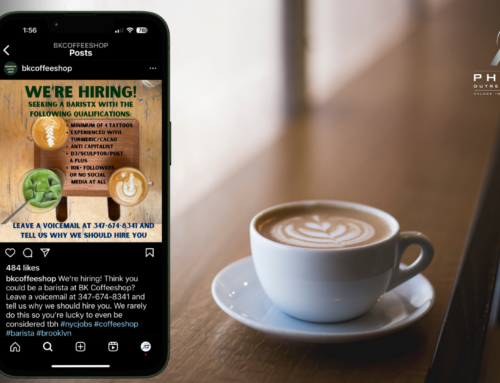When it comes to workforce development storytelling, the stakes are high. You’re not just sharing information—you’re shaping perceptions, influencing decisions, and inspiring action.
However, even the best intentions can fall flat if your storytelling misses the mark. To help you avoid common pitfalls, here are some key things not to do when crafting your workforce development narrative.
- Don’t Rely on Programmatic Speak: One of the biggest mistakes in workforce development storytelling is overloading your narrative with jargon and programmatic language. Terms like “alignment with sector strategies,” “leveraging resources,” or “integrated service delivery models” might sound impressive within the industry, but they can alienate your audience. Remember, your goal is to connect with real people—job seekers, employers, community members—not just to impress your peers. Use language that is accessible, engaging, and human.
- Don’t Focus Solely on Data: While metrics and outcomes are important, they should not be the focal point of your story. Numbers alone don’t inspire—they inform. If your storytelling is just a recitation of statistics, you’re missing an opportunity to connect on an emotional level. Instead, use data to support the human stories behind your success. Highlight the individual journeys, the challenges overcome, and the impact on lives. This approach makes your narrative relatable and memorable.
- Don’t Ignore the Bigger Picture: Workforce development isn’t just about getting people jobs; it’s about building stronger communities, empowering individuals, and driving economic growth. If your storytelling focuses too narrowly on individual programs or initiatives, you might miss the chance to communicate the broader impact of your work. Make sure your narrative reflects the bigger picture and the transformative role your organization plays in the community.
- Don’t Focus Only on the Cinderella Story: While it’s tempting to spotlight the Cinderella stories—the job seekers who overcame the odds to achieve their dreams—don’t forget to focus on your true customers: employers. Highlight the businesses that have been able to recruit, retain, and grow thanks to your services and support. Showcase the industries that have been drawn to your region as a result of your pool of skilled talent. By emphasizing how your efforts are directly benefiting employers and driving economic growth, you underscore the value you bring to the broader community.
- Don’t Be Afraid to Show Vulnerability: It’s tempting to present only the success stories, but a one-sided narrative can come across as inauthentic. Don’t shy away from sharing the challenges and obstacles your organization faces. Highlighting your struggles shows resilience and determination, which can make your successes even more meaningful. Plus, it builds trust with your audience by showing that you’re transparent and real.
- Don’t Overlook the Power of Visuals: A story is more than just words—it’s an experience. If you’re not incorporating visual elements like photos, videos, and infographics into your storytelling, you’re missing out on a powerful way to engage your audience. Visuals can help illustrate your narrative, evoke emotion, and make your message more memorable. Don’t let your story be confined to text alone—bring it to life with compelling visuals.
- Don’t Forget to Speak to Your Audience’s Needs: Your story isn’t about you—it’s about your audience. If your storytelling is too focused on your organization’s accomplishments and initiatives without considering what your audience cares about, it may fall flat. Tailor your narrative to address the needs, concerns, and aspirations of your audience. Whether they’re job seekers, employers, or community stakeholders, make sure they see themselves in your story.
- Don’t Neglect the Call to Action: A good story inspires action. Whether you want your audience to enroll in a program, support an initiative, or simply share your story, make sure you include a clear and compelling call to action. Don’t leave your audience wondering what to do next—guide them with purpose.
- Don’t Just Tell—Show: In storytelling, showing is always more powerful than telling. Instead of simply stating that your program is effective, demonstrate it through real-life examples, testimonials, and success stories. Show how your services have made a tangible difference in the lives of individuals and the growth of businesses. Use vivid, relatable anecdotes that allow your audience to visualize the impact. Showing, rather than telling, brings your narrative to life and creates a stronger emotional connection.
- Don’t Share Stories the Same Way Across All Platforms: Different platforms require different storytelling approaches. What works on your website might not work on social media, and what resonates in a video might fall flat in a blog post. Tailor your stories to fit the platform—short, punchy content for social media, detailed narratives for your website, and engaging visuals for video platforms. Adapting your stories to the strengths of each platform ensures your message is both effective and impactful.
*Bonus: Don’t Forget to Humanize Every Story
Every story you share should be deeply human. Don’t just talk about what your organization did—showcase the real people behind those achievements.
Humanize your narratives by focusing on the individuals who were impacted and the personal stories that highlight their journey. And always remember to showcase the impact and payoff that came from partnering with you for customized workforce solutions.
This approach not only makes your stories more relatable but also reinforces the value of your services in a concrete, personal way.
In Review
Effective workforce development storytelling is about more than just conveying information—it’s about making a connection.
By avoiding these common pitfalls, you can ensure that your narrative resonates with your audience and drives the impact you’re striving for.
Keep your storytelling human, relatable, and focused on the broader mission, and you’ll not only inform but also inspire.






